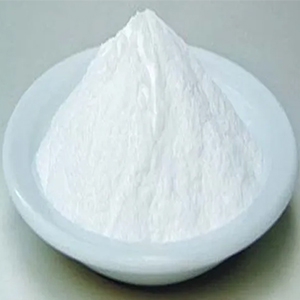
Ph Eur
9004-32-4
Action and use: Excipient; bulk laxative.
Preparation: Carmellose Sodium Eye Drops
DEFINITION
Carmellose sodium (carboxymethylcellulose sodium) is the sodium salt of a partly Ocarboxymethylated cellulose. It contains not less than 6.5 per cent and not more than 10.8 per cent of sodium (Na), calculated with reference to the dried substance.
CHARACTERS
A white or almost white, granular powder, hygroscopic after drying, practically insoluble in acetone, in ethanol and in phenylmethane. It is easily dispersed in water giving colloidal solutions.
IDENTIFICATION
A. To 10 ml of solution S (see Tests) add 1 ml of copper sulphate solution. A blue, cotton-like precipitate is formed.
B. Boil 5 ml of solution S for a few minutes. No precipitate is formed.
C. The solution prepared from the sulphated ash in the test for heavy metals gives the reactions of sodium.
TESTS
Solution S: Sprinkle a quantity of the substance to be examined equivalent to 1.0 g of the dried substance onto 90 ml of carbon dioxide-free water at 40C to 50C stirring vigorously. Continue stirring until a colloidal solution is obtained, cool and dilute to 100 ml with carbon dioxide-free water.
Appearance of solution: Solution S is not more opalescent than reference suspension and not more intensely coloured than reference solution.
pH: The pH of solution S is 6.0 to 8.0.
Apparent viscosity: While stirring, introduce a quantity of the substance to be examined equivalent to 2.00 g of the dried substance into 50 ml of water heated to 90C. For a product of low viscosity, use if necessary, the quantity required to give the concentration indicated on the label. Allow to cool, dilute to 100.0 ml with water and stir until dissolution is complete. Determine the viscosity using a rotating viscometer at 20C and a shear rate of 10s- 1. If it is impossible to obtain a shear rate of exactly 10s- 1, use a shear rate slightly higher and a rate slightly lower and interpolate. The apparent viscosity is not less than 75 per cent and not more than 140 per cent of the value stated on the label.
Sodium glycollate: To pass the test: (0.4 per cent)
Chlorides: Dilute 2 ml of solution S to 15 ml with water R . The solution complies with the limit test for chlorides (0.25 per cent).
Heavy metals: To the residue obtained in the determination of the sulphated ash, add 1 ml of hydrochloric acid and evaporate on a water-bath. Take up the residue in 20 ml of water. 12 ml of the solution complies with limit test A for heavy metals (20 ppm).
Loss on drying: Not more than 10.0 per cent, determined on 1.000 g by drying in an oven at 105C.
Sulphated ash: 20.0 per cent to 33.3 per cent, determined on 1.0 g using a mixture of equal volumes of sulphuric acid and water and calculated with reference to the dried substance. These limits correspond to a content of 6.5 per cent to 10.8 per cent of sodium (Na).
LABELLING
The label states the apparent viscosity in millipascal seconds for a 20 g/l solution; for a product of low viscosity, the label states the concentration of the solution to be used and the apparent viscosity in millipascal seconds.